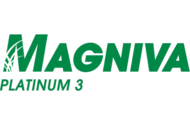Signs of Ash Contamination
Forage analysis should provide ash levels. A forage testing lab determines the ash content of a sample by burning the sample down in an oven. The only feed component left is ash.
Producers may suspect ash contamination when silage presents:
- Clostridial spoilage
- High ammonia levels
The average ash content in forages is typically around:
3-5%
IN CORN
6-8%
IN GRASSES
8-10%
IN LEGUMES
Risks for Ash Contamination
The risk for ash contamination grows with:
- Rain, flooding or wind that can cause soil to splash or blow onto leaves
- Dry weather and drought conditions allow dust to settle on leaves
- Plant lodging during harvest
- Uneven fields that may cause the equipment to “scalp” the field
- Storage structures placed directly on the ground
Challenges with Ash Contamination
Soil contamination can cause poor-quality ensiling fermentations by introducing molds, yeasts and bacteria.
Dirt is not a nutrient for animals. As external ash contamination elevates, there is a corresponding drop in relative forage quality.
Preventing Ash Contamination
Ash contamination can be prevented from the field to feedout. Where possible, producers should:
- Avoid harvesting lodged forage. Reduce downed forage by planting varieties that stand better. If harvesting lodged forage, do so in a single direction against the angle of lodging.
- Raise the cutter bar of a disc mower. Lowering the cutting height increases the total yield but will likely boost the content of ash in the forage. Set the height at about 2.5 to 3 inches, or 7 cm.
- Use flat knives on a disc mower. Curved knives on disc mowers can retrieve forage from the ground better, but they also draw soil into the forage.
- Keep the windrow off the ground. Keep the forage on top of the stubble — not on contact with the ground.
- Keep rake tines from touching the ground.
- Minimize moving hay horizontally. Move two swathes on top of a third in the middle rather than to rake all to one side.
- Use a windrow merger. Mergers help the hay move horizontally rather than being rolled across the ground.
- Storage silage on concrete or asphalt. Silage can be removed with minimal dirt contamination.
Managing Ash Contamination
Monitor and assess ash content using forage analysis. Nutritionists and producers must carefully balance the forage minerals with supplemental vitamins and minerals.
External ash contamination should be limited to less than 10% in all crops. Use good silage management practices to prevent contamination.









